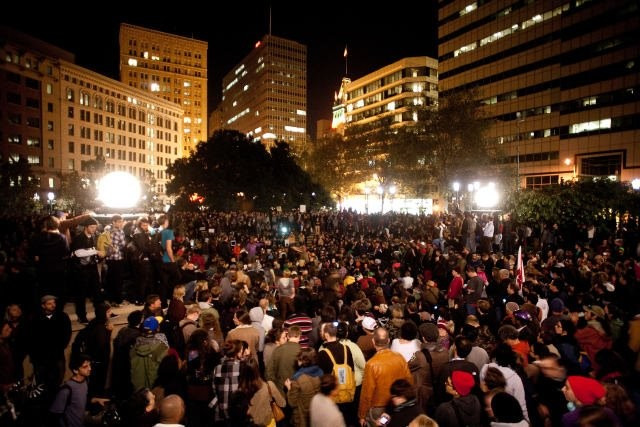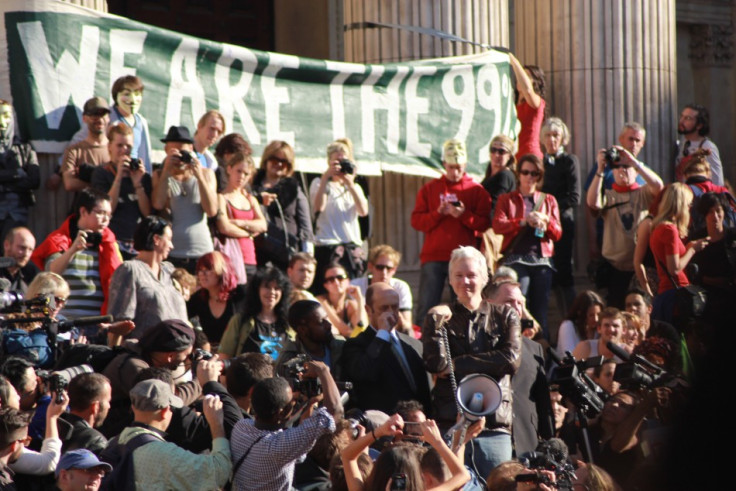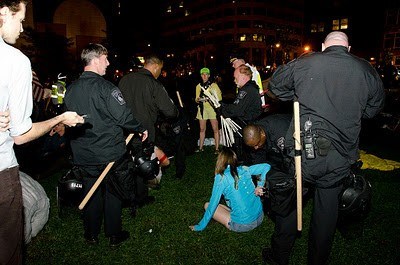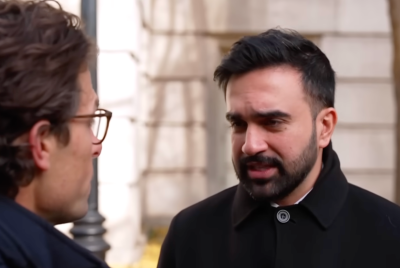Occupy Wall Street in 2012: Can the Leaderless Revolution Survive?

With the Occupy movement having survived into the holiday season, the International Business Times UK takes a look at what the movement has achieved and explores the question; how much longer can the leaderless revolution continue?
Occupy Wall Street and the Expansion to Europe
The opening Occupy Wall Street protest began 17 September, seeing hundreds, and soon thousands, of protesters descend on Wall Street and pitching tents in a park nearby.
Almost immediately after Occupy Wall Street began, a number of other Occupy protests began to erupt across America. The Occupy L.A, Boston, Chicago, Oakland, Philadelphia and Washington protests garnering significant media attention, with reports of police violence breaking after footage of police officers using pepper spray against seemingly peaceful protesters spread across the Internet.
Following the opening American protests, a massive turning point often attributed as a key moment for the movement, occurred mid-way through October, when Occupy Wall Street and the host of groups associated with it, put out a global call-to-arms asking all like-minded individuals to join it on 15 October. The call was in turn met by numerous groups with Occupy protests erupting across the globe.
The Evolution of Adbusters' Mission Statement
Though the Occupy movement had reasonable exposure prior to the emergence of Occupy protests, it was only with the arrival of the 15 October protests that many Europeans took notice and extended the call for change to a global rather than American-centric demand.
The first Occupy call-to-arms appeared earlier in 2011 via a blog post in Adbusters magazine. Inspired by the Arab Spring and Spain's Democracia real YA platform, Adbusters' called for all like-minded individuals unhappy with the current global political and economic system to march on Wall Street and mount an ongoing sit-in protest.
"On September 17, we want to see 20,000 people flood into lower Manhattan, set up tents, kitchens, peaceful barricades and occupy Wall Street for a few months. Once there, we shall incessantly repeat one simple demand in a plurality of voices," read Adbusters' initial blog post.
Containing the specific goal of "ending [of] the influence money has over our representatives in Washington," the opening statement had a clear goal, that quickly gathered support from numerous groups, including the Anonymous collective.
A Leaderless Revolution

While the expansion of the Occupy movement into Europe has increased the protests' global presence, it has led to some confusion regarding its end-goal and direction. As stated in Adbusters' opening call-to-arms, Occupy protests by design don't have leaders.
"The beauty of this new formula [not having one leader], and what makes this novel tactic exciting, is its pragmatic simplicity: we talk to each other in various physical gatherings and virtual people's assemblies ... we zero in on what our one demand will be, a demand that awakens the imagination and, if achieved, would propel us toward the radical democracy of the future ... and then we go out and seize a square of singular symbolic significance and put our asses on the line to make it happen," read Abusters' statement on the leaderless revolution model.
Continuing: "Tahrir succeeded in large part because the people of Egypt made a straightforward ultimatum - that Mubarak must go - over and over again until they won. Following this model, what is our equally uncomplicated demand?"
The trouble is, while this tactic works for a mass of people with one common goal, it is less effective when the protest is formulated by numerous groups and individuals, each with their own agenda.
With the movement's expansion into Europe, Occupy has debatably gone through a stage of ideological division, where the only common feature between each group is the "we are the 99 per cent" slogan -- referring to the movement's belief that the current global economic and political system only caters to the needs of the top 1 per cent.
The Occupy London movement is a particularly poignant example of the current ideological dilemma facing the Occupy movement. Like the other Occupy protests across the globe, the London cell has attempted to overcome the lack of cohesion between each group's ideologies by holding regular "general assembly" meetings -- evening meetings between representatives of each group to decide the protests' demands and manage certain logistical issues facing the protest.
Though the meetings have allowed the protest to create its own "evolving manifesto," a quick read of the document reveals the plurality of groups and ideologies contained within the movement. The manifesto contains everything from a demand for the end of bankers' influence on government policy and an end to capitalism as a whole, to specific attacks on the government's student university fees policy.
Can they Achieve Anything?

The fact that each protest houses various different groups with their own grievances, ideologies and goals makes it even more difficult to predict the future of the Occupy movement.
With each group there for very different reasons, it's likely that if the movement is to end -- short of law enforcement successfully evicting protesters from their campsites -- the end of each protest will be a drawn-out affair.
As each group's goals are either fulfilled or stamped out, it's likely a proportion of the body of protesters will leave, or change their tactics. If this happens the movement may find itself in a state of flux, with different groups coming and going depending on how the protest serves their needs. If this happens the movement's power may decline, with it becoming even more unclear what the protesters hope to achieve.
That said, as noted in the IBTimes UK's hindsight look at the Occupy movement in 2011, given the sheer size and number of protests sweeping the globe, Occupy protesters have had at least one key victory -- they've let the world know they're angry and aren't willing to keep quiet about it anymore. For this reason and this reason alone, whether or not the movement survives into 2012, protesters can at least take solace in the fact the world has now been forced to pay attention.
© Copyright IBTimes 2025. All rights reserved.




















